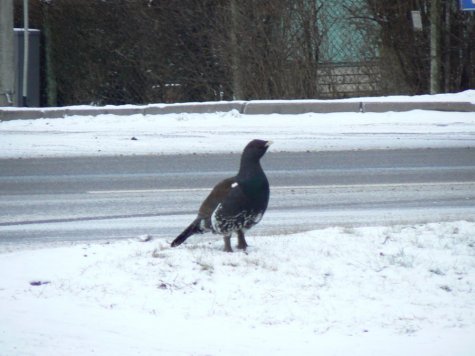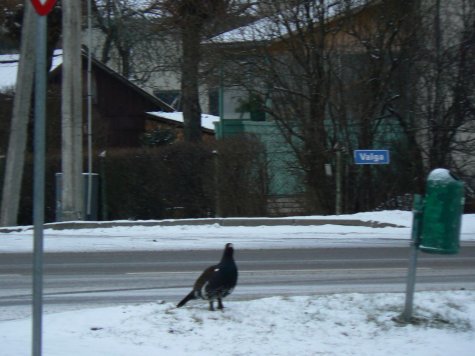Capercaillie in Tõrva
Capercaillie photographed in Tõrva by Andrus Seer
Translation Liis
Capercaillie Metsis or mõtus Tetrao urogallus
Only during the mating periods - that in a warm winter may begin already in March - the capercaillies are true to their display areas, even for many generations or decades; these areas are usually protected. In winter they move around searching for suitable feeding grounds, and the sexes don’t meet until on the display ground. The number of breeding birds is estimated to be a little more than a thousand pairs and their decrease during the last 50 years has been drastic; on the islands we will not meet them.
How can a capercaillie stray into a town? The shy birds are set moving by interferences, particularly larger clear fellings in forests. Things happen when searching for still remaining old pine forests. About 10 so called mad capercaillies stray into our communities in a year. In Tõrva a capercaillie was last seen on the first days of May last year. Such behaviour was first noted here in 1961. In general there are more male birds adventuring, and they can also display a threatening attitude to people.
The capercaillie, an ancient inhabitant of our nature, is a forest species: They only manage to fly rather short distances with great noise and at low height and are usually busy on the ground; for the night they settle on thicker pine branches. The cock in the photo, with a mostly black plumage, can weigh about 4 kilos, the weight of the hens, with well camouflage-coloured plumage, stays around 2 kilos. We have to do with the largest Galliformes bird species in Europe.
Capercaillie observations: LINK
See also the behaviour of a capercaillie in Alutaguse: LINK










